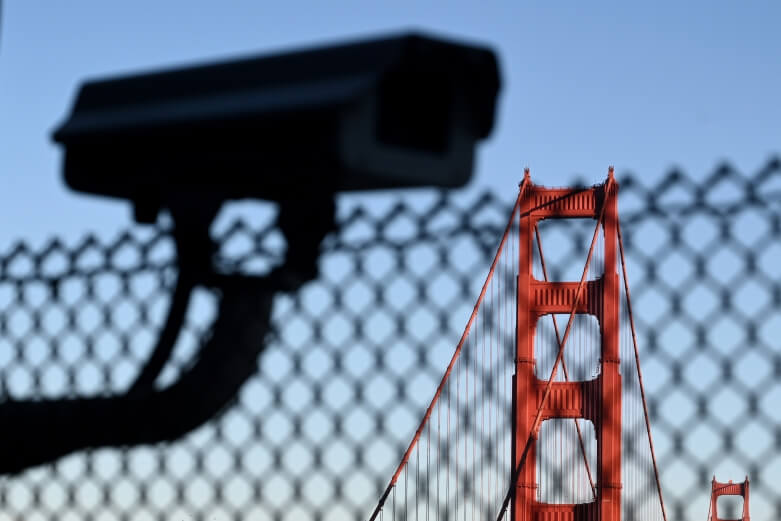California’s Surveillance Systems Have Once Again Become a Major Liability
Page Media

In recent decades, surveillance has increased exponentially across California. Politicians and business leaders promised that the proliferation of cameras, automated license plate readers, drones, biometric recognition technology, and other electronic surveillance would increase public safety. It has not.
In fact, with President-elect Donald Trump about to reassume office, the very systems that officials promised would keep us safe have become a major liability.
If President-elect Trump’s first term taught us anything, it is that his administration fully intends to commandeer information collected in our state to try to attack California communities and undermine California law. The often highly personal information collected by local police departments and municipal governments is a tinderbox.
California collects and shares far, far too much information about its people. What’s happening at the state’s six fusion centers is a prime example. These shadowy state entities built up during the Bush administration hoover up massive amounts of our personal information – including people’s location, identity, biometrics, and social media activity – and make this information available to the very agencies that President-elect Trump wants to weaponize. These domestic spy centers have little to no recorded public safety benefit, but they have been used to improperly surveil immigrants, Arab Americans, and environmental justice, reproductive justice, racial justice activists, and other peaceful advocates.
We expect the Trump administration to take advantage of the surveillance business model that drives so many companies to hoard troves of personal information. These databases reveal who people are, where they go, what they believe, who they love, the healthcare they need, and more – and are ripe for exploitation by the federal government.
What’s different this time around is that President-elect Trump will take the oath as the power of technology and Silicon Valley industry giants reaches new heights. AI-powered surveillance is growing, enabling the easy automation of mass surveillance, high-tech profiling, and biased policing.
We know where President-elect Trump will start. Project 2025 lays it out. Immigrant communities, transgender people, people seeking reproductive health services, and activists. But the list will certainly grow, especially as Trump continues his assault on the rule of law, threatening the lives and livelihoods of Californians across all walks of life.
California’s ability to defend itself depends on its ability to control and limit the information that the Trump administration can access. To help fortify our defenses, we at the ACLU of Northern California have created two resources, the first for policymakers, the second for business leaders. We also have recommendations for how leaders can use existing California law to its full effect.
Our recent report, Seeing Through Surveillance: Why Policymakers Should Look Past the Hype, equips government leaders with tools and frameworks to scrutinize, understand, oversee, and dismantle the surveillance systems in their communities. It includes lessons learned from over a decade of groundbreaking work by the ACLU of Northern California Technology and Civil Liberties Program. Dozens of communities in California and across the country have used our surveillance reports and toolkits to enact important laws that limit and bring independent oversight to surveillance technology, including banning systems such as face surveillance.
The report also includes many examples of non-surveillance alternatives, highlighting communities that improved public safety by using non-surveillance alternatives, like speedbumps instead of speed cameras or city beautification policies instead of biometric spying devices.
The other resource is the ACLU’s business primer, Privacy & Free Speech: It’s Good for Business. Its 150 case studies illustrate the financial and moral dangers of imprudent information collection and user surveillance. The last thing a company should want is a reputation for selling out their users or putting them in harm’s way. Our primer explains how companies can avoid these pitfalls by reevaluating what information they collect, how it is retained, used, and shared, and what steps they can take to better protect people’s information.
Finally, to reinforce our firewall, California must be prepared to use our privacy laws to their full effect.
California’s state constitution explicitly provides a robust right to privacy, above and beyond what’s found in the US Constitution. It grants an inalienable right to privacy that applies to governments and private actors alike. Forged by intersectional social justice movements resisting similar state oppression to what we face today, it was passed by the voters in 1972 to protect against threats to personal freedom and security caused by increased surveillance and data collection. This right to privacy is an important foundation for protecting Californians.
We also have landmark California state privacy laws like the California Electronic Communications Privacy Act (CalECPA) and the California Reader Privacy Act, which prevent government agencies from obtaining information about people’s online lives, digital devices, and reading habits without a warrant. Another law known as SB 34 stops California agencies from sharing driver locations with the federal government and other states (we have successfully enforced it), while our abortion shield laws specifically protect our right to control our bodies and access abortion care. And the landmark California Values Act gives us the power to disentangle state and local agencies from federal deportation efforts.
All these laws will prove critical in the coming months and years. We must enforce them and aggressively fight against federal efforts to preempt and undermine them. But what gives the law real power are leaders and advocates with the courage to fight back.
The rights guaranteed by California law cannot just be words on paper. These rights must also be the lived reality. In the months ahead, new challenges will require we act to protect our communities, fortify the firewalls that protect Californians’ information, and not shy away from defending the privacy protections that enable us to pursue safe and fulfilling lives. If the decades we’ve spent working with community partners to defend and promote civil rights in the digital age have taught us anything, it is never to underestimate the power we all hold when we work together. Now, our job is to make sure we use it.
This post was originally published on Tech Policy Press. It is part of a series from various contributors examining US state tech policy issues in the year ahead.
